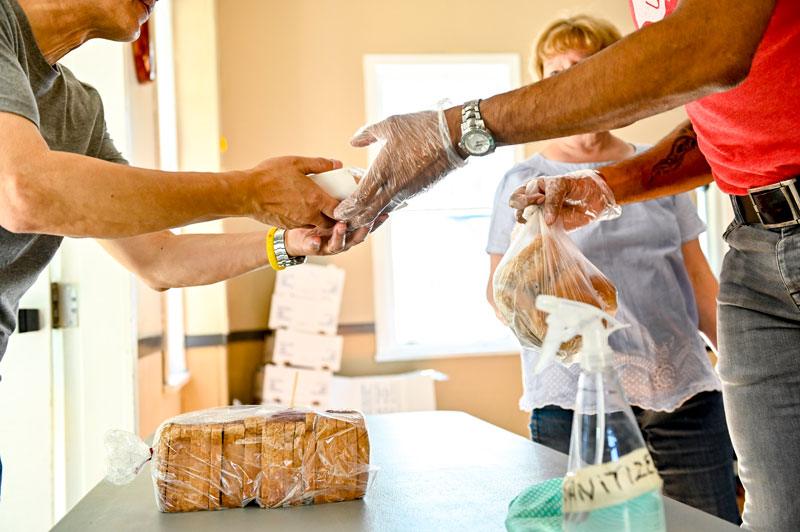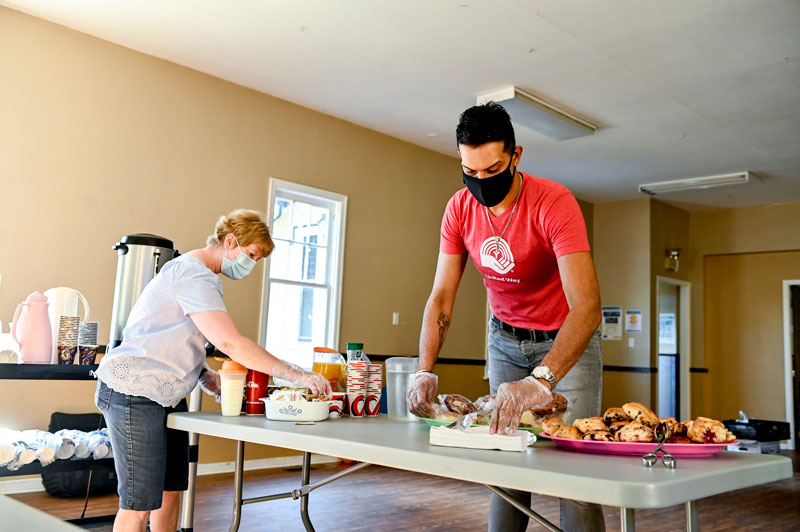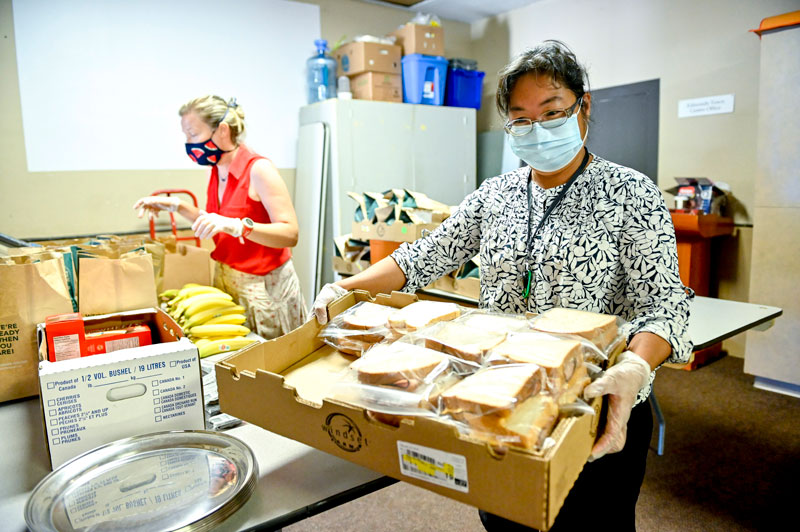
When Tara-Kelly Andrews left her children’s father 14 years ago, two children with medical needs in tow, she knew she’d need support. In the early days, help came via welfare payments, food bank visits and a school program that sent food home with her children for the weekend.
But Andrews was able to complete her post-secondary studies — and while she was doing so, found out about help of a different kind.
That help “was a food hub that rescues food that is recovered from grocery stores,” says Andrews, who lives in Coquitlam, B.C. “We wouldn’t be standing here without all the support we’ve received thanks to food banks and food hubs.”
According to figures from Statistics Canada, food insecurity affects one in seven Canadians — up from one in 10 Canadians in the wake of the pandemic.
READ MORE: Many more Canadians going hungry as coronavirus pinches economy: StatsCan
Given the increased need, organizations like United Way British Columbia are working with communities in B.C.’s Interior, Lower Mainland, and Central and Northern Vancouver Island on food hubs, which aim to both feed people and give them a sense of belonging.
In partnership with United Way British Columbia, we look at how this community-based solution is working in neighbourhoods across the province.
What are food hubs?
While there is room in the system for both food banks and food hubs, there’s more immediacy for hubs. “We move food as we receive it. The idea is to get fresh, nutritional food into the hands of people who need it within different neighbourhoods,” says Denise Darrell, executive director of Sources Community Services in Surrey, B.C., a non-profit that offers programs for children, families and seniors, including a food hub.
Moving food quickly means working closely with communities to determine who needs help, as well as finding food from local sources such as wholesalers, processors and farms. Even fruit from backyard trees can be donated to hubs. This allows food hubs to distribute perishable items such as produce, dairy, meat and bakery items, rather than shelf-stable foods.
Food hubs work differently for recipients, too. “Hubs focus on holistic support to food access that involves an ecosystem of care,” says Emily Rees, director, community development at Collingwood Neighbourhood House in Vancouver, which has also partnered with United Way British Columbia on food hubs.
This means people can come to food hubs and receive both a meal and support. Hubs can give them access to community networks, a chance to volunteer and other opportunities to connect with others.
Recipients might also get involved in a food hub through a family agency, newcomer support services or other social services. They can receive (or have delivered) a food hamper or even prepared meals.
Different food hubs for different communities
“What’s interesting about the United Way food hubs is that they’re all set up differently. There are 16 hubs across B.C. representing more than 160 organizations. That looks different in some communities,” Rees says.
Some hubs focus on food distribution, while others work first on community relationship building. But together, they’re making a difference: United Way food hubs provided almost 4 million meals in the past year.
The pandemic was a chance for organizations running food hubs in the province to examine their role. “COVID-19 highlighted the cracks in our food system. We’re recognizing there are supply chain issues and that food insecurity doesn’t impact everyone equally. The pandemic gave us a reason to hurry up and look at systemic issues of food insecurity,” Darrell says.
READ MORE: Food insecurity in Canada at ‘crisis level,’ says expert
Why do food hubs work?
“Food is the currency for connection,” Darrell says. Food hubs’ work within local communities may uncover seniors who have been largely isolated in their homes due to the pandemic, or larger cultural or ethnic populations who are food insecure but have specific needs.
“We’ll give out chickpeas, and it works for some communities and not for others,” Darrell says. “We have to be more mindful of who we work with and can’t give food that people don’t recognize.”
The focus on connecting with communities means many recipients return to food hubs as volunteers. That’s what brought Tara-Kelly Andrews back. “With all my experience being food insecure, when given the opportunity to volunteer, I jumped at it, and my kids have helped as well now that they’re older,” she says. “This is our way to say thank you and help other people.”
As little as $25 can provide five meals to families in need. Find out more about food hubs and how your donations can help feed neighbourhoods at United Way British Columbia – Lower Mainland Region’s Food for B.C. site.



